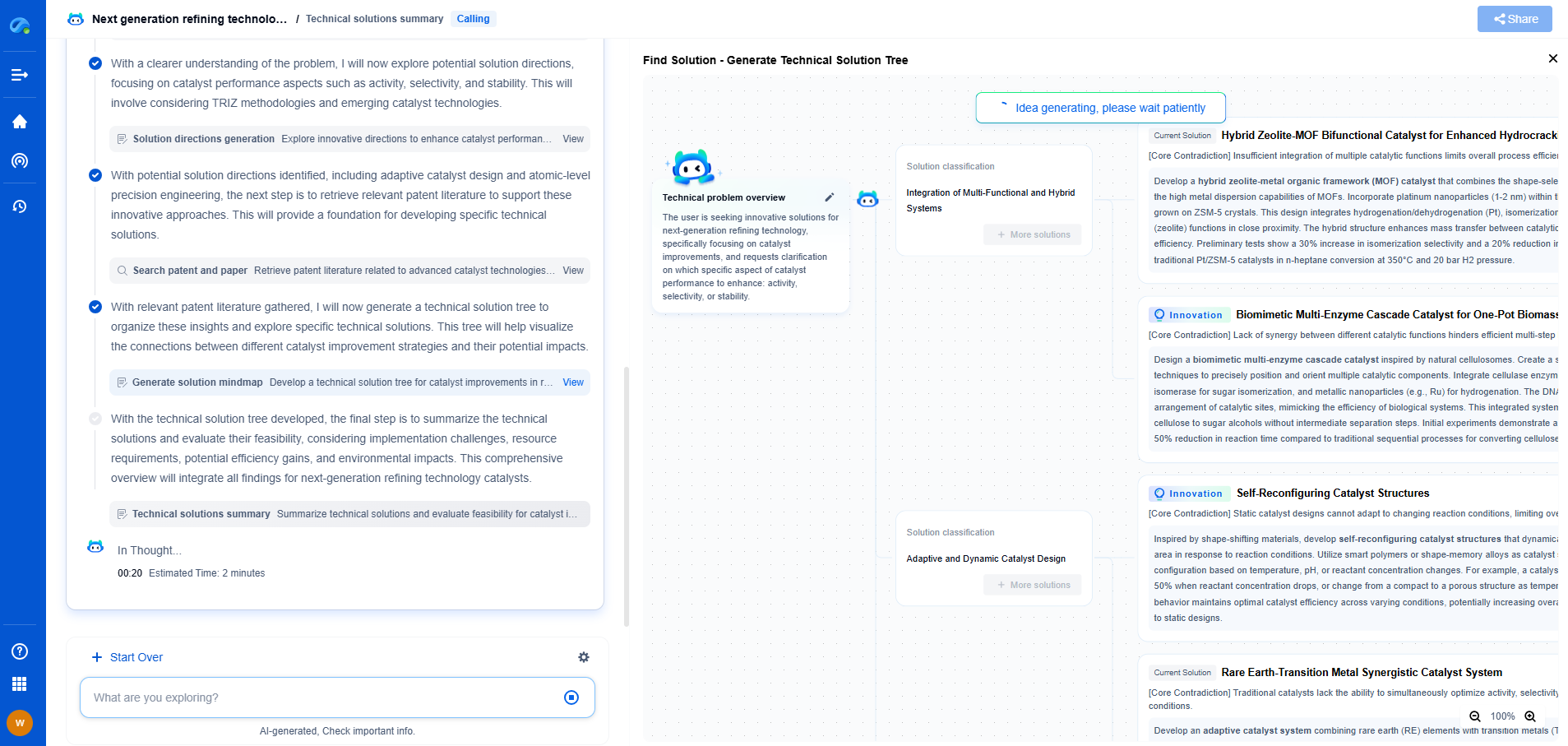What Are the Key Challenges in Heterogeneous Integration?
JUN 27, 2025 |
Complexity of Design and Integration Processes
One of the most significant challenges in heterogeneous integration is the inherent complexity involved in designing and integrating diverse components. These components often originate from different technology nodes, materials, and manufacturing processes, which can lead to compatibility issues. Engineers need to ensure that all parts function harmoniously within a single package while maintaining performance and reliability. This requires sophisticated design tools and methodologies capable of managing these complex interactions.
Thermal Management
Effective thermal management is crucial in heterogeneous integration due to the high power densities involved. With different components operating at varying power levels and thermal characteristics, managing heat dissipation becomes a formidable task. Without proper thermal management solutions, overheating can lead to system failures or reduced performance. Engineers must develop innovative cooling techniques and materials to dissipate heat effectively while keeping the overall system compact.
Material Compatibility and Reliability
Heterogeneous integration involves combining materials with differing thermal, mechanical, and electrical properties. Ensuring material compatibility is essential to prevent issues such as thermal expansion mismatch, which can cause mechanical stress and ultimately lead to component failure. Moreover, long-term reliability is a concern as materials interact over time, potentially causing degradation. Achieving reliability requires a deep understanding of material science and the development of robust testing and validation protocols.
Manufacturing and Assembly Challenges
The manufacturing and assembly of heterogeneous systems pose significant challenges. Traditional manufacturing processes may not be suitable for integrating diverse components. New techniques, such as advanced packaging and 3D integration, are being explored to overcome these issues. However, these techniques often require substantial investment in new equipment and infrastructure. Ensuring high yields and cost-effectiveness in production is essential to make heterogeneous integration viable for large-scale deployment.
Standardization and Interoperability
Another critical challenge is the lack of standardization in heterogeneous integration. With numerous stakeholders involved, including semiconductor manufacturers, material suppliers, and system integrators, establishing industry-wide standards is crucial. Standards would facilitate interoperability among different components and technologies, streamlining the integration process and reducing costs. Collaborative efforts are needed to develop and adopt such standards across the industry.
Testing and Validation
Thorough testing and validation are imperative to ensure the functionality and reliability of heterogeneous integrated systems. Due to the complexity of these systems, traditional testing methods may not suffice. New testing methodologies that can effectively evaluate the performance of diverse components within an integrated system are necessary. These methodologies should address potential failure modes unique to heterogeneous integration, ensuring that the final product meets the required performance and reliability standards.
Conclusion
Heterogeneous integration holds the promise of revolutionizing the electronics industry by enabling more powerful, efficient, and compact systems. However, the challenges it presents are non-trivial and require concerted efforts from researchers, engineers, and the industry as a whole. By addressing the complexities in design, thermal management, material compatibility, manufacturing, standardization, and testing, the full potential of heterogeneous integration can be realized, paving the way for the next generation of electronic devices.
Empower Your Breakthroughs in Basic Electric Components with Patsnap Eureka
From resistors, capacitors, and inductors to fuses, connectors, superconductors, and nano-scale materials—basic electric elements may be the building blocks of modern electronics, but the innovation behind them is anything but simple. As device miniaturization accelerates and materials science pushes new frontiers, R&D and IP teams face increasing complexity in staying on top of technical advancements, patent activity, and competitive landscapes.
Patsnap Eureka, our intelligent AI assistant built for R&D professionals in high-tech sectors, empowers you with real-time expert-level analysis, technology roadmap exploration, and strategic mapping of core patents—all within a seamless, user-friendly interface.
🔧 Whether you’re optimizing energy storage, improving thermal resistance, or creating the next leap in circuit efficiency, Patsnap Eureka is your AI copilot for high-efficiency, high-precision R&D and IP strategy.
👉 Experience how Patsnap Eureka can revolutionize your R&D and IP strategy. Request a demo today and power up your next breakthrough.
- R&D
- Intellectual Property
- Life Sciences
- Materials
- Tech Scout
- Unparalleled Data Quality
- Higher Quality Content
- 60% Fewer Hallucinations
Browse by: Latest US Patents, China's latest patents, Technical Efficacy Thesaurus, Application Domain, Technology Topic, Popular Technical Reports.
© 2025 PatSnap. All rights reserved.Legal|Privacy policy|Modern Slavery Act Transparency Statement|Sitemap|About US| Contact US: help@patsnap.com

